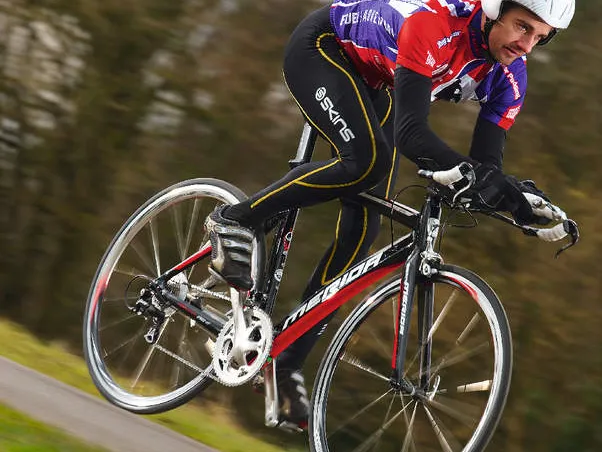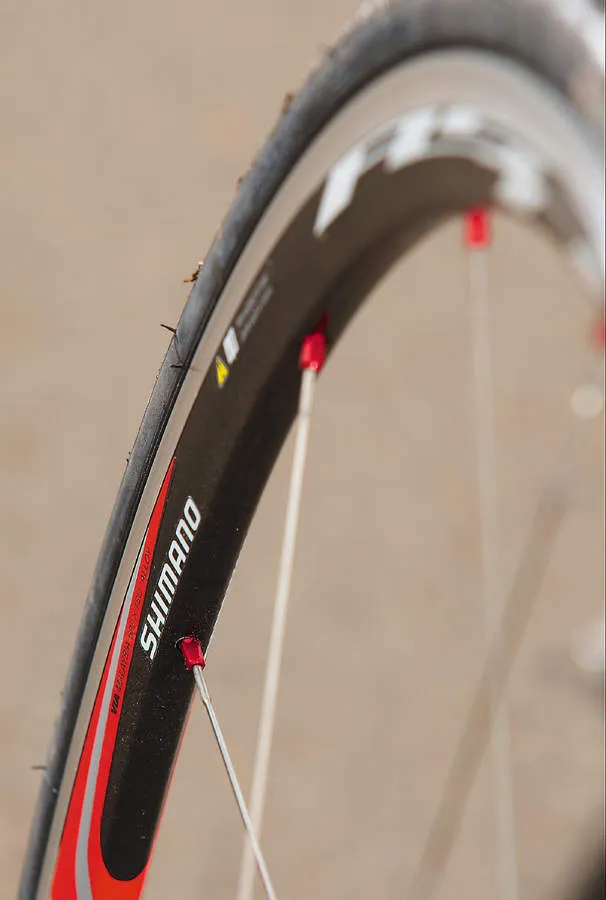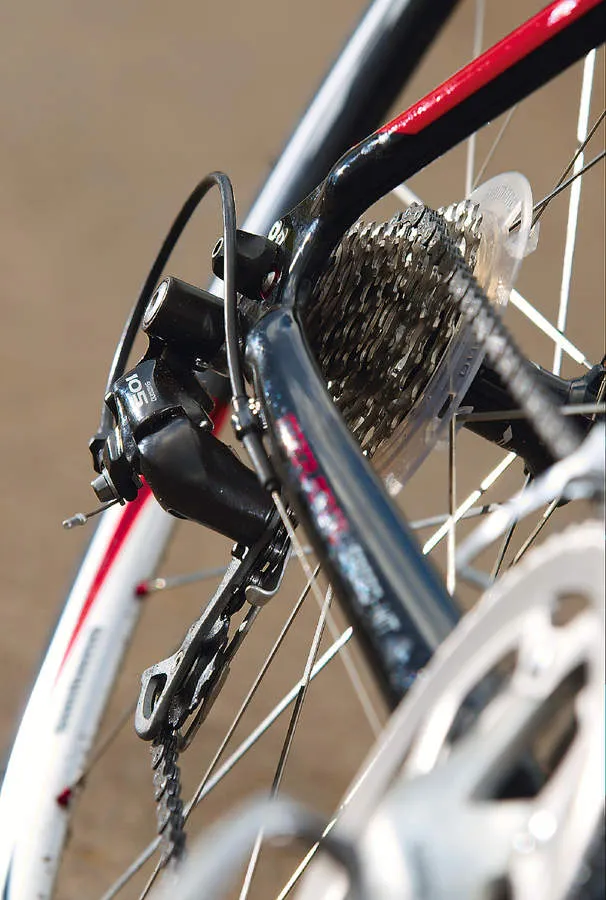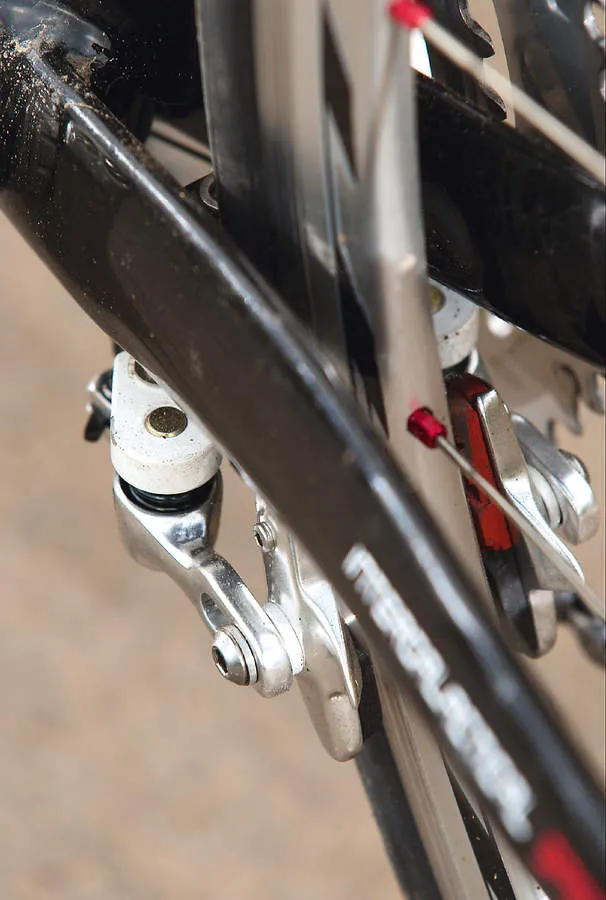One of the world’s biggest bike manufacturers, Merida make frames for many other brands as well as their own machines. The Warp is the bottom bike of their revamped three-model triathlon/time trial range and shares its alloy frame with the £2,555 Warp 6.
Ride & handling: Stiff and stable, but high weight reduces responsiveness
Getting up to speed on the Warp HFS 4 is a game of two halves. On one side the big-boned frame is massively stiff in every axis you could ask for. That means it squeezes maximum juice out of every pedal stroke and puts it straight through the rear wheel on smooth surfaces. The stiffness, accuracy and stable ride feel mean you can really get your back behind a gear and hold it into a headwind without wandering off the white line.
The overall weight of the bike means you have to be patient and put more muscle in to get the Warp up to working velocity in the first place, though. Extended upward inclines produced a groan from Warp testers on group rides before we got to them too. The super-stiff hindquarters and far-forward hand position of the Vision bars make it hard to get consistent rear wheel connection on rougher climbs, with traction scatter and skip being a problem for more powerful riders.
The direct rider-to-rear wheel connection is inspiring on flat, silky smooth tarmac, but pitted surfaces lead to a lot of fatiguing rattle and shake. While the saddle does what it can to comfort your derriere, a keen eye for road quality is essential to maintain a smooth pedal spin and keep you off the chiropractor’s bench. The shock-absorbing abilities of the fork mean at least shoulders stay relatively supple though, and front wheel tracking is excellent.
Chassis: Carbon-look frame gives a great ride on smooth tarmac
The HFS 4's geometry and eye-catching curved, oversized outline is based on Merida's top Warp carbon frames. They’ve even smoothed the welds for a carbon-copy look right up close. Hydroformed tube shaping is extensive throughout, with multi-shaped maintubes including a wheel-hugging seat tube and a short keel under the bottom bracket.
This is where the internally routed gear and brake cables pop out ahead of a chainstay-mounted centre pull brake. This ‘hides’ the brake among the already dirty air of the chainset, and stops it interfering with cleaner airflow around the seatstay area, reducing overall drag. The tapered and bladed stays are unbraced to keep airflow clean and the airfoil seat tube ggets a curved wheel-hugger cutout.
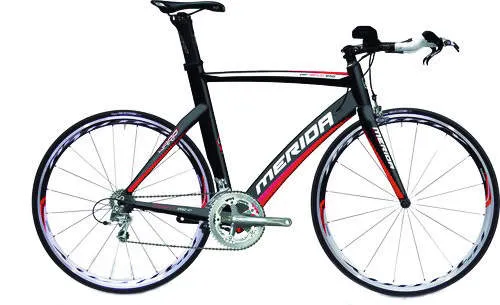
Horizontal dropout slots with neat red anodized spacer blocks adjust clearance between tyre and frame. The rear slot slows wheel removal for packing or puncture repair though, and it’s a shame the only colour detailing is almost impossible to see.
The carbon leg and crown forks are quality lightweight items, with the taper-legged forks syncing into the bulged head tube. The loops of cable between down tube and bars need trimming if you drop the front end though, otherwise they bounce off your knees and generally look a right bird’s nest.
Given Merida’s metalwork experience, the real surprise is that the bare frameset weight is very high, at just a whisker under 2kg. This does deliver power and accuracy dividends, but it definitely stifles the upgrade potential of the Warp.
Equipment: Spec is largely adequate rather than aspirational
It’s obvious from the kit that Merida are concentrating more on other features than mass. You can flip the hinged FSA Varius stem to give up to 80 degrees of positive to negative angle adjustment and easily changed cockpit height. It’s a more weighty solution than a reversible riser stem and a generous stack of headset spacers, though.
Further positioning possibilities are provided by the alloy aero seatpost with twin position seat clamp, allowing a fully forward aero position. At 335g it’s another weighty bit of kit, though. The conventional shallow-rim Shimano RS30 wheelset is reasonably light and very smooth-running.
The non-groupset Shimano chainset and 105 gears work very smoothly through proper extension-tip Shimano shifters with mid-cable barrel adjusters for tuning on the fly. However, they’re only adequate rather than aspirational in terms of Top Trump value at this price.
The positioning of the rear brake with its grub screw secured cable block is awkward to adjust (especially after wet, gritty rides) and braking power is reduced, even with dual compound cartridge pads.
